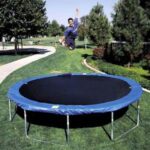Many women share an embarrassing little secret, they pee their pants! After they become Moms and as the years pile on, bladder control becomes more and more of a challenge. If they jump on a trampoline with their kids, have a coughing jag, let go of a healthy sneeze, or laugh a little too hard, they find themselves running for their lingerie drawer for a new pair of panties. But they don’t have to live with stress incontinence, because of an easy, effective solution, Bladder Sling Surgery!
What Causes Stress Incontinence?
Surgeryencyclopedia.com’s sectiion entitled, “Sling Procedure” gives the follwing statistics regarding incontinence.
-10-30% of women experience incontinence during their lifetime.
-Women at highest risk have given birth to more than three children
-Women who were given oxytocin to induce labor are at high risk
-Women who smoke have twice the rate of incontinence
-Women who do high-impact exercises are at much higher risk for incontinence
-Highest on the list for risk of urinary leakage are gymnasts, softball, volleyball, and basketball players
-Diabetes or Obesity contribute to incontinence
Web MD defines Stress Incontinence as, “the inability to control the release of urine when pressure on the abdominal muscles increases.” They further explain, “Causes of stress incontinence include changes in the nerves and muscles that control the release of urine.” Various situations can change the pelvic muscles and supportive structures to create the problem. They give the following three primary reasons for the condition 1) Multiple childbirths,2) Aging, and3) Being overweight.
Their Women’s Health August 2008 article, “Kegel Exercises – Topic Overview” explains further, “During pregnancy and delivery, the pelvic floor can become stretched and weakened, commonly causing urine control problems for months to years after childbirth.
What is a Bladder Sling?
There are several types of slings, but Mayo Clinic’s Urinary incontinence section, discusses the 90% success rate of the Pubovaginal fascial sling. They explain that during this type of operation, “the urologist attaches a piece of fascia (flat, tough, tendonlike material – about 1 inch wide and 5 inches long) around the bladder neck to keep urine in, even under stress.” The slings are made of human tissue from either the patient or a donor.
The most popular sling choice today is the Sub urethral sling, which is made of a synthetic mesh placed under the urethra which acts like a hammock, lifting and compressing the urethra, preventing leaks. This type of sling surgery is less invasive and has a faster recovery time than the Pubovaginal fascial sling, with the same success rate. As well, the mesh is unlikely to disintegrate as a human tissue sling can.
Are There Alternatives to Bladder Sling Surgery?
Doctors regularly recommend trying Kegel Exercises to strengthen the muscles involved. Also, some drugs may be effective in providing improved control. However, in many situations, the Bladder or Urethral sling is the only solution that provides adequate relief.
What You Can Expect with this Surgery: My Personal Experience
I had been plagued to some degree by stress incontinence for at least ten years. It was at times embarrassing, and at very least inconvenient. It seemed to me that as soon as I was post menopausal and no longer had a period, the need to wear a mini-pad to avoid the embarrassment of stress incontinence began. How unfair is that? My closest girlfriend, who is a nurse, had gone through the surgery successfully and gave me the name of her surgeon, Paul M. Block, M.D., F.A.C.S. She recommended him highly and the surgery site regarded him as one of the best surgeons for this procedure.
Dr. Block used the Suburethral Sling made of mesh for me. The procedure is done vaginally, with the legs in stirrups during the operation. My surgery was early morning on a Friday, performed as an outpatient procedure, and I was home in the early afternoon. I had only two small incisions, one on both sides of the vulva right around the panty line. I wore a pad due to some bleeding during the first two days, which also cushioned the incisions. I was given pain medication and an antibiotic, and told to have some assistance the day of surgery.
My daughter stayed with me, but I actually felt remarkably well and had very little pain. My legs were sore from the positioning during surgery (I felt like I had done some serious leg presses!) but other than that, I had no problems walking, urinating, or going about my business. I had taken Monday off from work just in case, but really didn’t need it.
I was told not to lift heavy objects or strain during a bowel movement during the next few months, while I was healing. If I had ignored this advice before my body had healed, the tissue in the surgery site and the sling might become detached or stretched, resulting in an unsuccessful surgery. That was the last thing I wanted, and I caught myself several times during the first couple weeks after the Bladder Sling surgery starting to lift something and stopped.
My Personal Bladder Sling Results
My bladder sling surgery was 100% successful! Once healed, I no longer had the need to wear a mini pad. I am now relaxed, secure that my stress incontinence has been corrected, and that embarrasing incidents are a thing of the past.
I did have to adjust my sitting position to completely empty my bladder after surgery by leaning forward when urinating. If I did not do this, I found that a small amount of urine would leak as soon as I stood up. It also takes me a little longer to finish since the neck of my bladder has been corrected to a more restricted size, so I don’t rush my potty breaks! I have adjusted to these changes happily without issues.
Having the bladder sling surgery has completely changed my life and returned my freedom to me. No more embarrassing leaks or mini-pads needed. It was such an easy surgery to recover from, that I wished I had done it sooner! There is no indication that I’ll ever need a redo, but if I should, I would do it again in a heartbeat!
Resources:
webMD.com
Mayoclinic.com





